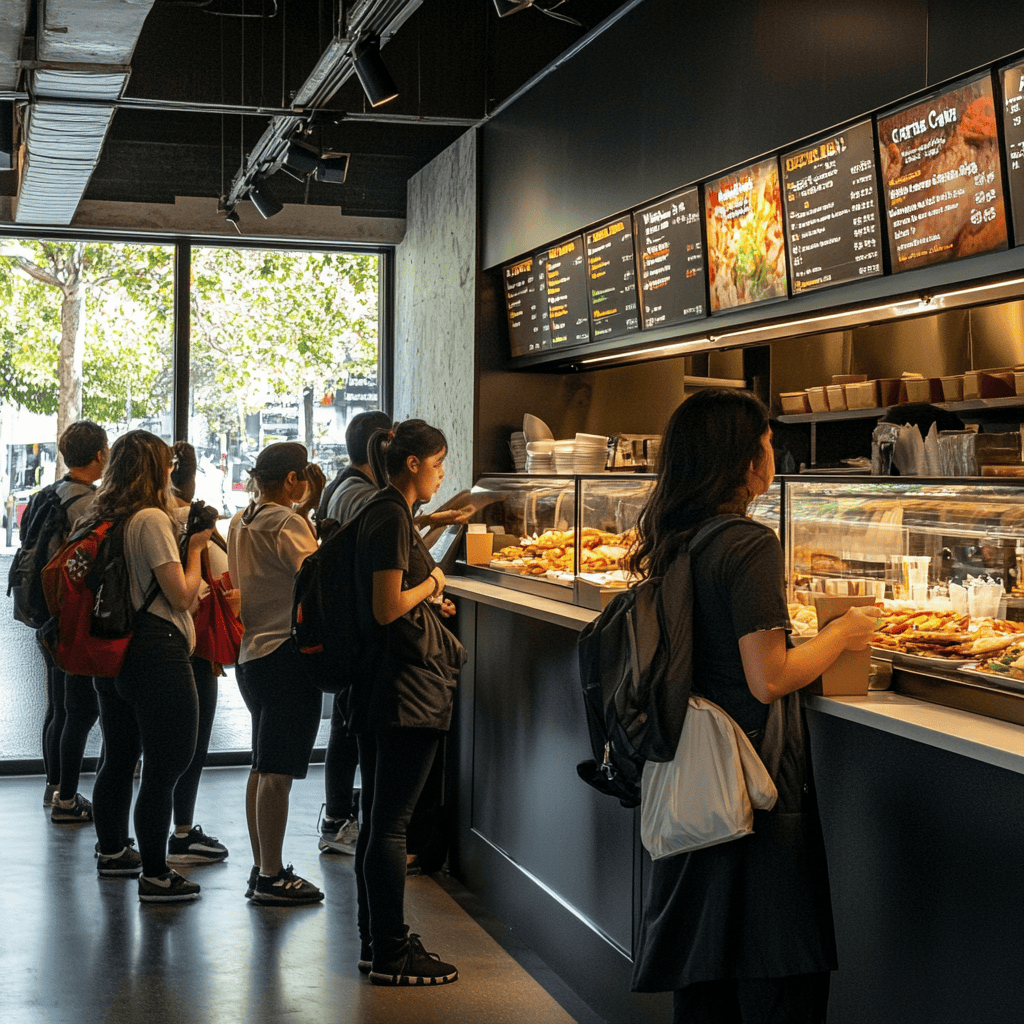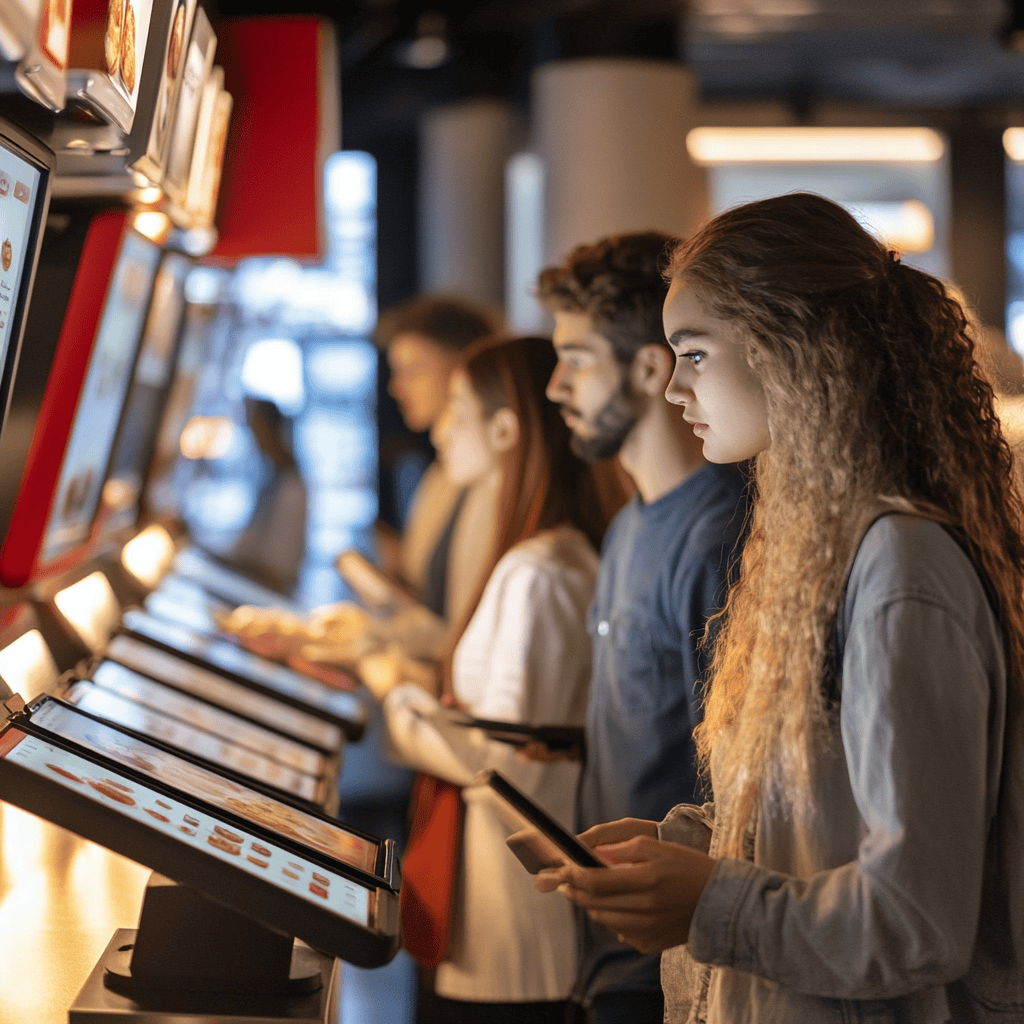
Nobody likes waiting. Whether at a car wash, a theme park, or in line for coffee, standing around with nothing to do can frustrate even the most patient customer. Gamification entertains customers and distracts them from how long they’re actually waiting.
Gamification isn’t just for kids’ apps and video games anymore. It’s quickly becoming a strategy for businesses across industries, and for good reason. It’s fun, it’s engaging, and it works.
Studies show that companies using gamification can see a 47% increase in engagement. Happy, entertained customers are far less likely to complain about a long wait.
So, how can businesses use gamification to make their customers’ waiting experience less painful? Let’s explore a few winning strategies for turning idle time into playtime.
The Power of Distraction: Why Gamification Works
No one enjoys waiting, but people do love to be entertained. Gamification taps into that basic human desire for engagement. Instead of standing around twiddling thumbs, customers can be drawn into fun, interactive activities that make time fly by. Whether it’s a simple trivia game, a virtual leaderboard, or a chance to win a small prize, these tools shift the focus away from the clock.
Research shows that providing distractions during wait times can reduce perceived wait time by up to 35%. It’s like a mental shortcut: if you keep someone busy, they’re far less likely to notice how long they’ve been in line.
How Gamification Can Fit into Your Business
For businesses, introducing gamification doesn’t have to mean installing arcade cabinets in the lobby (though that would be fun). Instead, digital tools and mobile apps have made it easier than ever to introduce engaging experiences that fit naturally into customers’ everyday habits. Here are a few ideas to get those creative gears turning:
- Mobile Games: Have customers open a branded app to play a quick game while they wait. Whether it’s earning points or solving puzzles, this keeps them occupied and encourages them to engage more deeply with your brand.
- Augmented Reality (AR): Got customers waiting outside or in a lobby? Introduce a fun AR scavenger hunt that takes them around the waiting area. This can reduce boredom and turn your location into part of the game.
- Digital Leaderboards: Everyone loves a little friendly competition. Show a live leaderboard featuring customers’ top scores. It gives people something to strive for and incentivizes repeat visits (because who doesn’t want to be number one?).
- Wait-time Quizzes: Incorporate quizzes related to your business or products. Waiting customers could earn points for correct answers, redeemable for discounts or freebies. It’s interactive, educational, and rewarding all at the same time.
Numbers Don’t Lie: The Impact of Gamification on Customer Satisfaction

Still not convinced? Let’s talk numbers. Businesses that have embraced gamification have seen some serious results. Game-based engagement can increase brand loyalty by 22%. Companies using gamified systems can experience up to a 47% increase in engagement, which means customers are sticking around longer and spending more.
If you’re in an industry where wait times are inevitable (think car washes or crowded retail spaces), the last thing you want is frustrated customers walking out. A little distraction goes a long way, and gamification is proven to increase customer satisfaction by offering an interactive experience that keeps them entertained.
Reducing Perceived Wait Times: A True Advantage
Perceived wait time is a psychological phenomenon in which how long someone thinks they’ve waited is often more important than the actual time they’ve spent in line. Even a short wait can feel like an eternity when people are bored or annoyed. But with something to do, the wait suddenly becomes more bearable—or even enjoyable.
Think of it this way: gamification acts as the perfect distraction. Instead of focusing on how slow the line is moving, customers are concentrating on their score or the next quiz question. By the time they look up, they’re at the front of the line, and the wait didn’t seem so bad after all.
Beyond the Wait: Optimizing Employee Productivity with Gamification
While gamification has a proven track record of enhancing the customer experience, its benefits extend beyond the queue. Let’s not forget the hidden opportunities it offers to boost employee engagement during downtime.
Integrating gamification strategies into staff routines can turn downtime into valuable moments of learning and improvement. For example, gamified training modules or performance-based challenges can help your team improve service efficiency, even when foot traffic is low.
Employees could earn points for completing tasks, mastering new skills, or excelling in customer interactions. This would keep them engaged and stimulate continuous improvement. Moreover, by combining gamification with real-time data analysis, businesses can streamline operations to ensure staff and customers experience shorter wait times and better overall service.
Pro Tip: Mix Gamification with Transparency
While gamification is great, transparency about wait times is still essential. Giving customers an accurate wait time estimate can reduce their frustration. So, combine the two: use gamified elements to keep customers engaged and be upfront about how long they can expect to be in line. It’s a winning combo.

Final Thoughts
As we look toward the future, it’s obvious that gamification isn’t a passing trend. With the gamification market projected to grow from $9.1 billion in 2020 to $30.7 billion by 2025, more businesses realize the potential to transform dull wait times into memorable, engaging experiences.
Keeping customers happy during those in-between moments in industries where long waits are unavoidable can make or break the overall experience. And with the right strategy, turning queue time into playtime could be the difference between losing customers or gaining loyal advocates.

